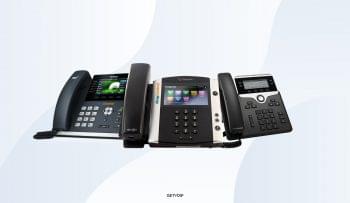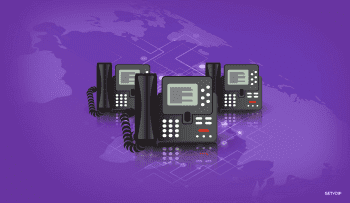PoE, or Power over Ethernet, refers to a technology which passes electrical power and data along on Ethernet cabling. As such, many users have begun to connect IP phones, wireless access points, cameras, and more to switches that draw power from Ethernet cabling. While this process can allot for a number of advantages including flexibility, cost savings, simplicity, and reliability, they are not guaranteed. Instead, these benefits can easily be turned into disadvantages. As such, there are a number of factors users should be aware of with PoE switches and adapters.
Powered Device Detection: Upon connecting a powered device to a port, a PoE switch uses detection to distinguish whether or not a powered device (i.e. IP phone) is connected to a port. This process occurs when the Ethernet device is initially connected; therefore, users should be aware that if they connect a non-PoE device to a port first, detection will be deactivated. This can cause a big problem as power is NOT applied unless a powered device is first detected. That being said, users need to be sure detection is enabled at all times. Once the powered device is detected to a PoE switch port, the switch is able to detect the powered device via various modes including DC detection (i.e. IEEE standard or 802.3af standard detection), Cisco or pre standard/AC detection, pre IEEE standard, etc.
Power Condition: Any disturbances on the power lines can cause a number of PoE problems. Typically, most of these problems are temporary, short term problems—for example, a lightning storm of power maintenance can cause a device to reboot; however, there are more serious effects too. For example, the power supply may appear shut down as there’s no output to any PoE port. That being said, users need to be sure of the reliability of their power source and monitor their system to be sure of no regular discrepancies.
Filtering: This stems from the condition of the power source as users need to be sure they can protect their network from external power problems from all the attached loads. If users fail to do this, it could be disastrous for their network—i.e. the network itself could go out.
Limited Power Capacity: Switches are typically PoE-enabled—meaning their wattage includes the power to run the switch and the ports; therefore, users need to be sure their adapters have enough wattage to power all the available ports, otherwise they’ll remain unpowered.
Compliance: Users can run into a lot of trouble if their device is not compliant—meaning the device does not support PoE. While non-compliant devices can be fit to allow for PoE, it requires additional tools/equipment and extensive knowledge and know-how. That being said, users should be sure their selected device is PoE ready.
Environment: Typically, PoE is well suited for small, low-power, local networks. In order to get PoE suited for larger environments, users need to augment their power supplies; however, in doing so, they are more vulnerable to new issues such as line losses. Even still, if users still deploy PoE over larger environments they can use AC power to boost their power output. This again leads to even more technical issues.
Speed: This stems from environment. Again, users looking for heavy data network should second guess PoE. Aside from high end switches, PoE generally slows the data speed of the network.
While there are a number of other potential problems to be aware of, the above incorporate those most commonly experienced. PoE can be very useful; however, users must be sure they can handle it—i.e. have the right devices, power supplies, etc.
Related Articles:
– Possible VoIP Disadvantages That Users Should Be Aware of
– Advantages of VoIP For Any Size Business






